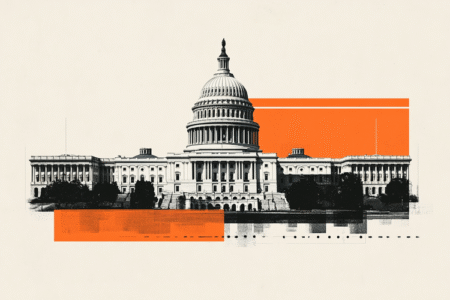- US CPI inflation cooled to 2.3% in April, below expectations, raising Fed rate cut speculation.
- Trump touts tax cuts and investment deals, but details on trade pacts remain vague.
- DXY slips below 101.60 as tariff truce with China lacks forward clarity.
- Markets expect first Fed rate cut by September 2025 with easing through 2026.
The US Dollar Index (DXY), which measures the value of the US Dollar against a basket of currencies, lost ground on Tuesday, slipping to 101.50 as inflation data for April came in softer than expected. While CPI rose 0.2% monthly and 2.3% annually, missing forecasts, core inflation held steady at 2.8%.
Traders remain cautious amid vague trade commitments with China and the UK, and there are new uncertainties after President Trump pushed ambitious investment and tax plans without detailing how they would impact the economy. Despite tariff de-escalation headlines, the Fitch-rated effective tariff rate on Chinese goods remains above 40%, fueling doubt over the recent deal’s durability.
Daily digest market movers: CPI figures and trade policies in spotlight
- CPI inflation in the US slowed to 2.3% annually in April, missing the expected 2.4%, and core CPI held at 2.8% YoY.
- Trump claims China has lowered tariffs, but Fitch says effective rates remain above 40% after legacy policies.
- Markets question substance of recent China and UK trade deals as details remain scant.
- President Trump promotes a $4 trillion tax cut bill focused on high-income earners, while lower-income taxes may rise.
- Trump says new “investment agreements” with firms like Amazon and Oracle will fuel growth but provides no framework.
- Fed’s Goolsbee warns tariffs can still fuel inflation, but recent data don’t confirm those fears.
- US and China have agreed to a 90-day tariff truce with US duties reduced to 30% and China’s to 10%.
- Fed policymakers maintain cautious tone as CPI remains within acceptable ranges, delaying potential monetary easing.
- Rate markets show a 91.6% probability of no change at the June 18 Fed meeting and 65.1% in July.
- September has a 51.6% probability of a 25 bps cut, with long-term projections pointing to 3.25%-3.50% by end of 2026.
- Risk assets remain mixed; Gold is flat after recent pullbacks, while Oil and equities are cautiously bid.
- Trump hints at Iran talks and outlines intent to enforce oil export embargo if diplomacy fails.
- Fed Chair Powell’s comments are awaited later in the week for guidance on policy direction.
- EUR/USD remains under pressure near 1.1060 with resistance at 1.1322 and support at the 1.1000 mark.
US Dollar Index technical analysis: Rate gap issues persist
The US Dollar Index exhibits a bearish signal, currently trading near 101.00 after a minor daily decline. Price action sits near the lower end of the intraday range between 101.19 and 101.76.The Relative Strength Index (RSI) and the Ultimate Oscillator both hover in the 50s, suggesting neutral momentum.
The Moving Average Convergence Divergence (MACD) shows a modest buy signal, but this is countered by the Stochastic Relative Strength Index (Stochastic RSI) Fast, which is extended in the 90s — indicating overbought conditions. Additionally, the 10-period Momentum indicator near 2.00 reinforces short-term selling pressure.
On the moving average front, the 20-day Simple Moving Average (SMA) continues to point upward, hinting at near-term bullishness. However, the 50-day Exponential Moving Average (EMA), 50-day SMA, 100-day SMA, and 200-day SMA — all clustered near the 100 level — indicate a broader bearish trend. Key support levels are identified at 100.94, 100.73 and 100.63, while resistance levels are noted at 101.42, 101.94 and 101.98.
US-China Trade War FAQs
Generally speaking, a trade war is an economic conflict between two or more countries due to extreme protectionism on one end. It implies the creation of trade barriers, such as tariffs, which result in counter-barriers, escalating import costs, and hence the cost of living.
An economic conflict between the United States (US) and China began early in 2018, when President Donald Trump set trade barriers on China, claiming unfair commercial practices and intellectual property theft from the Asian giant. China took retaliatory action, imposing tariffs on multiple US goods, such as automobiles and soybeans. Tensions escalated until the two countries signed the US-China Phase One trade deal in January 2020. The agreement required structural reforms and other changes to China’s economic and trade regime and pretended to restore stability and trust between the two nations. However, the Coronavirus pandemic took the focus out of the conflict. Yet, it is worth mentioning that President Joe Biden, who took office after Trump, kept tariffs in place and even added some additional levies.
The return of Donald Trump to the White House as the 47th US President has sparked a fresh wave of tensions between the two countries. During the 2024 election campaign, Trump pledged to impose 60% tariffs on China once he returned to office, which he did on January 20, 2025. With Trump back, the US-China trade war is meant to resume where it was left, with tit-for-tat policies affecting the global economic landscape amid disruptions in global supply chains, resulting in a reduction in spending, particularly investment, and directly feeding into the Consumer Price Index inflation.
Read the full article here















